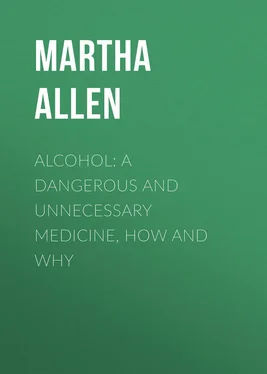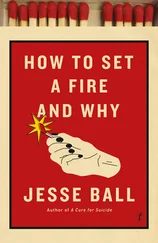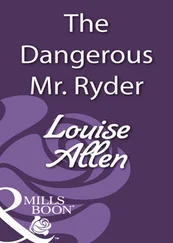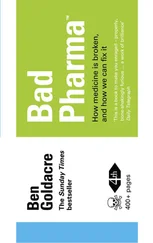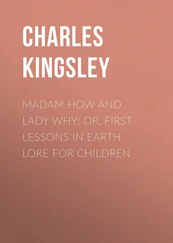Martha Allen - Alcohol - A Dangerous and Unnecessary Medicine, How and Why
Здесь есть возможность читать онлайн «Martha Allen - Alcohol - A Dangerous and Unnecessary Medicine, How and Why» — ознакомительный отрывок электронной книги совершенно бесплатно, а после прочтения отрывка купить полную версию. В некоторых случаях можно слушать аудио, скачать через торрент в формате fb2 и присутствует краткое содержание. Жанр: foreign_antique, foreign_prose, на английском языке. Описание произведения, (предисловие) а так же отзывы посетителей доступны на портале библиотеки ЛибКат.
- Название:Alcohol: A Dangerous and Unnecessary Medicine, How and Why
- Автор:
- Жанр:
- Год:неизвестен
- ISBN:нет данных
- Рейтинг книги:3 / 5. Голосов: 1
-
Избранное:Добавить в избранное
- Отзывы:
-
Ваша оценка:
- 60
- 1
- 2
- 3
- 4
- 5
Alcohol: A Dangerous and Unnecessary Medicine, How and Why: краткое содержание, описание и аннотация
Предлагаем к чтению аннотацию, описание, краткое содержание или предисловие (зависит от того, что написал сам автор книги «Alcohol: A Dangerous and Unnecessary Medicine, How and Why»). Если вы не нашли необходимую информацию о книге — напишите в комментариях, мы постараемся отыскать её.
Alcohol: A Dangerous and Unnecessary Medicine, How and Why — читать онлайн ознакомительный отрывок
Ниже представлен текст книги, разбитый по страницам. Система сохранения места последней прочитанной страницы, позволяет с удобством читать онлайн бесплатно книгу «Alcohol: A Dangerous and Unnecessary Medicine, How and Why», без необходимости каждый раз заново искать на чём Вы остановились. Поставьте закладку, и сможете в любой момент перейти на страницу, на которой закончили чтение.
Интервал:
Закладка:
“During the past year I have met with three cases in which the regular daily use of alcoholic drinks for several months, in quantities not sufficient to produce intoxication, had so altered the blood, and the renal function, that the urine contained both casts and albumen, and some degree of œdema was observable in the face and extremities. These changes were so marked as to justify a diagnosis of incipient nephritis, or Bright’s disease. Yet after totally abstaining from the use of alcoholic drinks and remedies, and taking such vasomotor tonics as strychnine and digitalis, with a regulated diet and fresh air, they completely recovered.
“When it is remembered that in diphtheria, pneumonia and typhoid fever, the acute diseases in which a large part of the profession administer most freely alcoholic remedies, the function of the kidney is altered in almost the same direction as are found to take place under the influence of alcohol, it should certainly cause every practitioner to pause and critically review the pathological basis on which he has been prescribing. An anæsthetic, like alcohol, may certainly render a patient with diphtheria, pneumonia or typhoid fever more quiet, and cause him to say he feels better, but if it at the same time diminishes the internal distribution of oxygen, retards the oxidation and elimination of waste and toxic products through the kidneys and lungs, and lessens vasomotor force, it cannot fail to protract the duration of disease, and increase the ratio of mortality.” —
Dr. N. S. Davis, A. M. T. A. Quarterly , April, 1894.Dr. J. H. Kellogg, by a series of carefully executed experiments, conclusively demonstrated that alcohol hinders the elimination of poisonous matter by the kidneys. This property of alcohol is one of the objections which he sees to its use as a medicine. He says: —
“Water applied externally stimulates elimination by the pores of the skin, and employed freely internally by water drinking, and enemas to be retained for absorption, aids liver and kidney activity. If the patient dies it is because his liver and kidneys have failed to destroy and eliminate the poisons generated with sufficient rapidity to prevent their producing fatal mischief in the body.”
CHAPTER VI.
ALCOHOL AS A MEDICINE
Although nearly all of the foremost scientific investigators of the effects of alcohol upon the body have lost faith in the old views of the usefulness of alcoholic liquors as remedial agencies a considerable proportion of the medical profession do not seem yet to have learned how to treat disease without recourse to the alcohol therapy. This is largely due to the fact that the new thought has not yet crystallized to any large extent in the medical text-books, and also to the widely variant views held by professors of medicine.
The medical use of alcohol has been, and still is, the great bulwark of the liquor traffic. The user of alcoholics as beverages always excuses himself, if hard pressed by abstainers, upon the ground that they must be of service or doctors would not recommend them so frequently. In all prohibitory amendment, and no-license campaigns, the cry of “Useful as Medicine” has been the hardest for temperance workers to meet, for they have felt that they had to admit the statement as true, knowing nothing to the contrary. Indeed, thousands of those who advocate the prohibition of the sale of liquor as a beverage, use alcohol in some form quite freely as medicine, and are as determined and earnest in defence of their favorite “tipple” as any old toper could well be. Many use it in the guise of cordials, tonics, bitters, restoratives and the thousand and one nostrums guaranteed to cure all ills to which human flesh is heir.
The wide-spread belief in the necessity and efficacy of alcoholics as remedies is the greatest hindrance to the success of the temperance cause. It is impossible to convince the mass of the people that what is life-giving as medicine can be death-dealing as beverage. The two stand, or fall, together. Hence there is no more important question before the medical profession, and the people generally, than that of the action of alcohol in disease, and, as a goodly number of the most distinguished and successful physicians of Europe and America declare it to be harmful rather than helpful, it behooves thoughtful people to carefully study the reasons they assign for holding such an opinion. Certainly it is true that if physicians and people would all adopt the views of the advocates of non-alcoholic medication the temperance problem would be solved, and the greatest source of disease, crime, pauperism, insanity and misery would be driven from the face of the earth.
To understand the arguments advanced in favor of non-alcoholic medication it is needful to make some study of the effects of alcohol upon the body, and of the purposes for which alcoholics are prescribed medically.
Alcohol is used in sickness as a food, when solid foods cannot be assimilated, “to support” or sustain, the vitality; it is used as a stimulant, a tonic, a sedative or narcotic, an anti-spasmodic, an antiseptic and antipyretic; it is used in combination with other drugs, in tinctures and in pharmacy. It is not wonderful that the people esteem it above all other drugs, for none other is so variously and so generally employed. Those who discard it as a remedy teach that only in human delusions is it a food or a stimulant, and for the other uses to which it is put, outside of pharmacy, there are different agents which may be more satisfactorily employed.
So well agreed are all the scientific investigators that alcohol has no appreciable food value that it would seem foolish to spend time upon a discussion of alcohol as food were it not that the idea of its “supporting the vitality” in disease, in some mysterious way is deeply rooted in the professional, as well as the popular mind.
Foods are substances which, when taken into the body, undergo change by the process of digestion; they give strength and heat and force; they build up the tissues of the body, and make blood; and they induce healthy, normal action of all the bodily functions.
Alcohol does none of these. It undergoes no change in the stomach, but is rapidly absorbed and mixed with the blood, and has been discovered hours after its ingestion in the brain, blood and tissues, unchanged alcohol. In many of the experiments made with it upon animals, considerable quantities of the amount swallowed were recovered from the excretions of the body, without any change having taken place in its composition. This, of itself, is sufficient evidence to show that it is a substance which the body does not recognize as a food.
Foods build up the tissues of the body. All physiologists are agreed that since alcohol contains no nitrogen it cannot be a tissue-forming food; there is no difference of opinion here. Dr. Lionel Beale, the eminent physiologist, says that alcohol is not a food and does not nourish the tissues.
“There is nothing in alcohol with which any part of the body can be nourished.” – Cameron’s Manual of Hygiene .
“Alcohol contains no nitrogen; it has none of the qualities of the structure-building foods; it is incapable of being transformed into any of them; it does not supply caseine, albumen, fibrine or any other of those substances which go to build up the muscles, nerves and other active organs.” – Sir B. W. Richardson.
“It is not demonstrable that alcohol undergoes conversion into tissue.” – Dr. W. A. Hammond.
If it is a food why do all writers and experimenters exclude it from the diet of children, and why is the caution always given people to not take it upon an empty stomach? Foods are supposed to be particularly suited to an empty stomach.
Читать дальшеИнтервал:
Закладка:
Похожие книги на «Alcohol: A Dangerous and Unnecessary Medicine, How and Why»
Представляем Вашему вниманию похожие книги на «Alcohol: A Dangerous and Unnecessary Medicine, How and Why» списком для выбора. Мы отобрали схожую по названию и смыслу литературу в надежде предоставить читателям больше вариантов отыскать новые, интересные, ещё непрочитанные произведения.
Обсуждение, отзывы о книге «Alcohol: A Dangerous and Unnecessary Medicine, How and Why» и просто собственные мнения читателей. Оставьте ваши комментарии, напишите, что Вы думаете о произведении, его смысле или главных героях. Укажите что конкретно понравилось, а что нет, и почему Вы так считаете.
